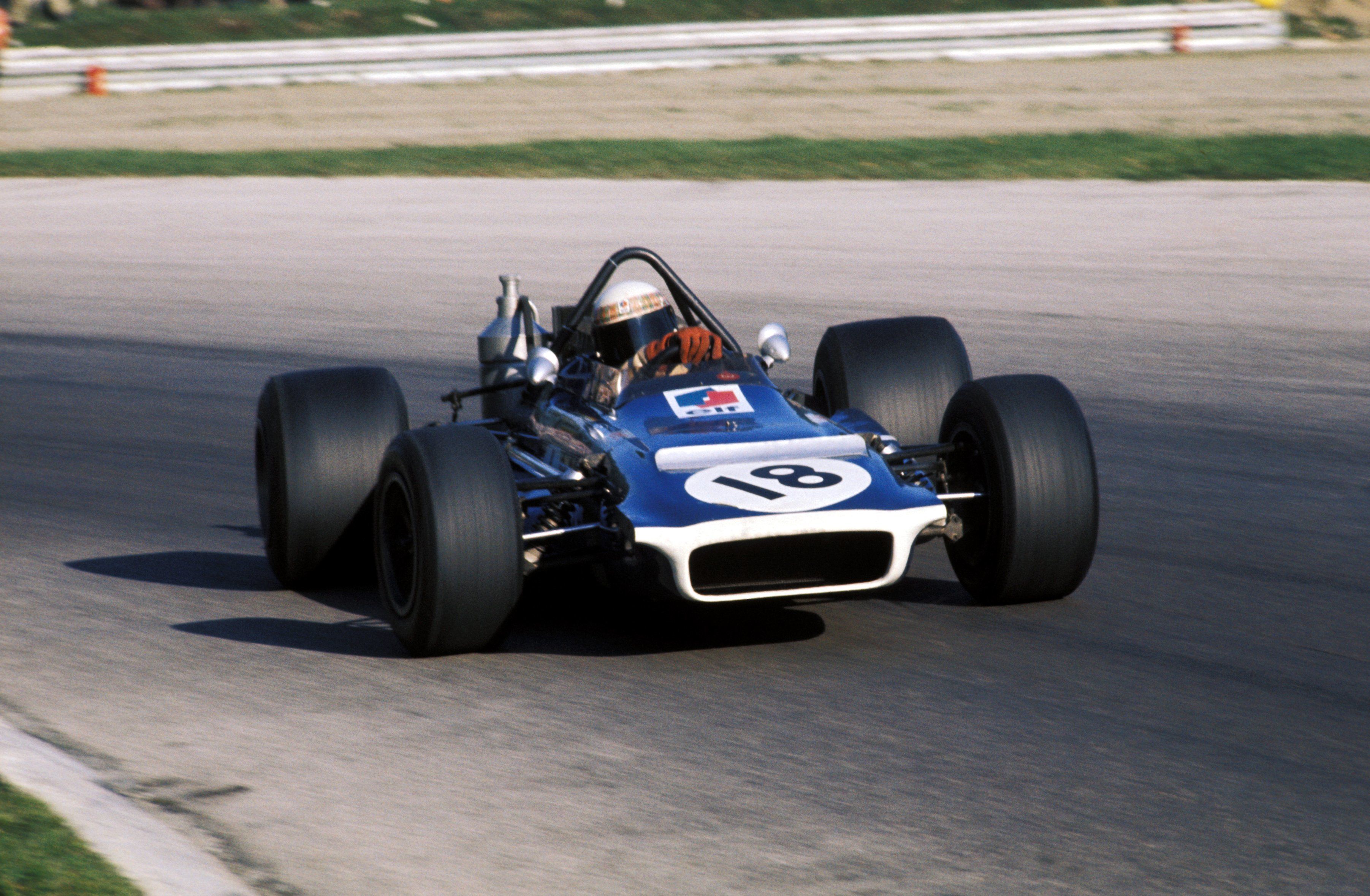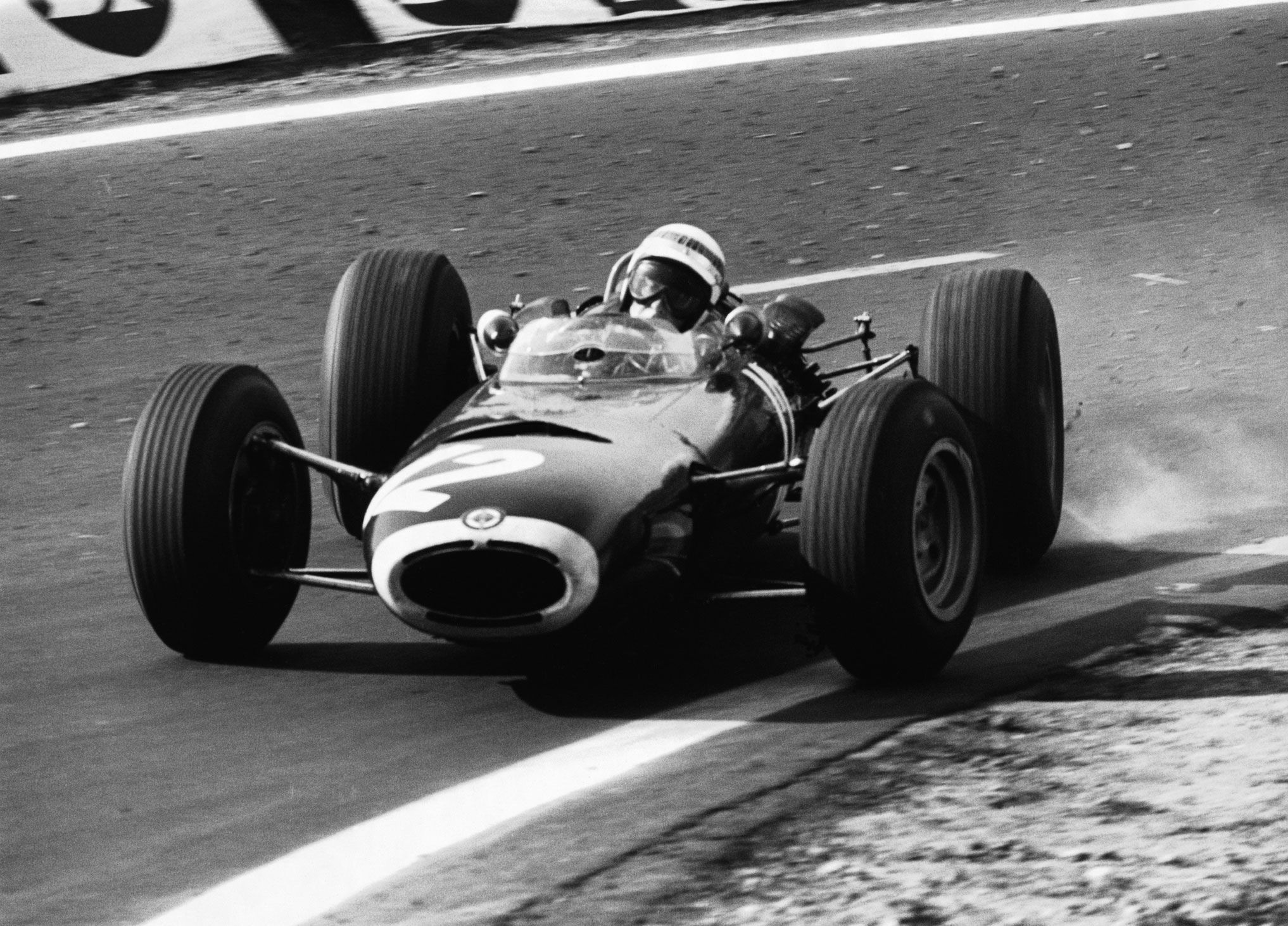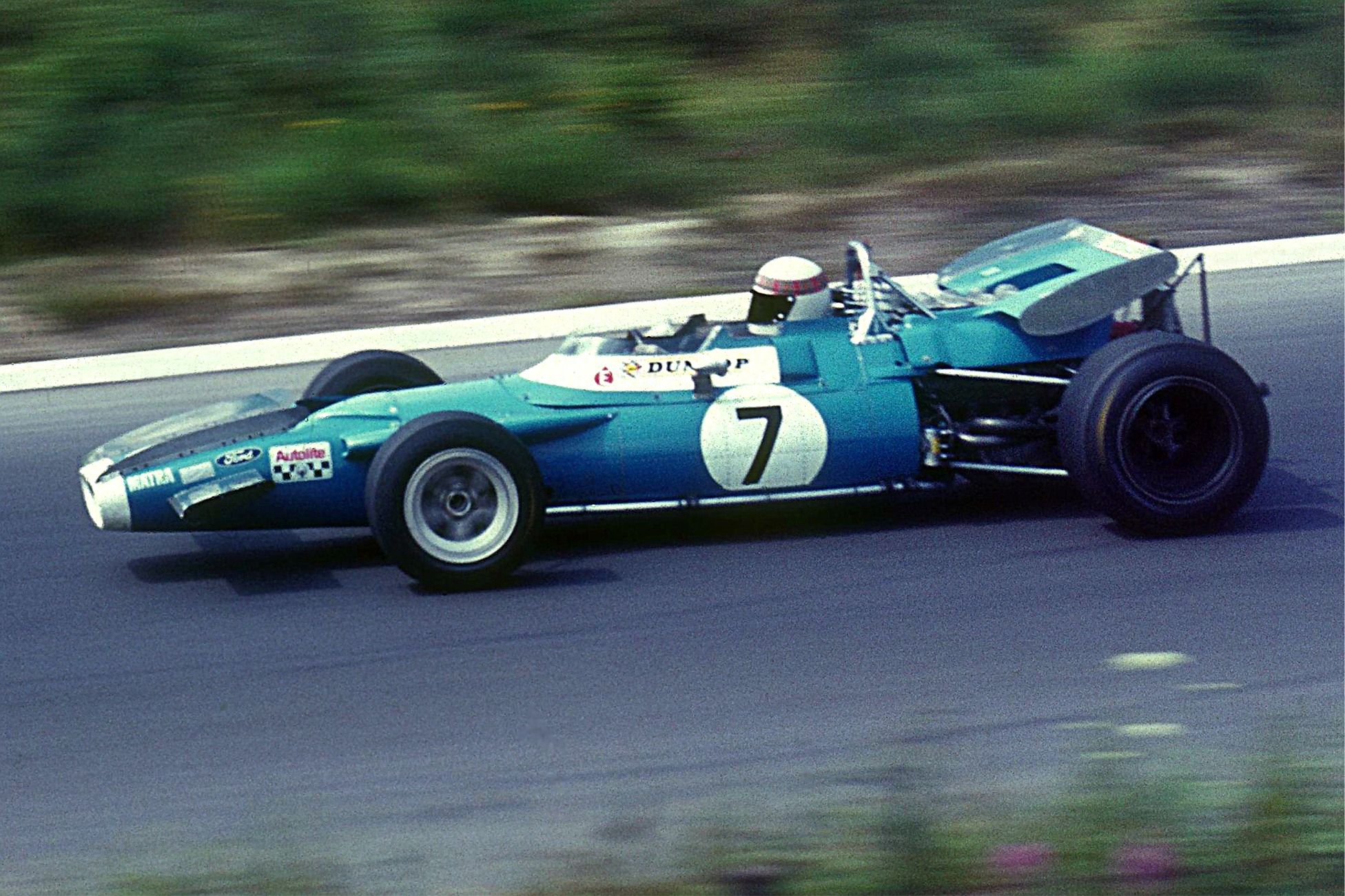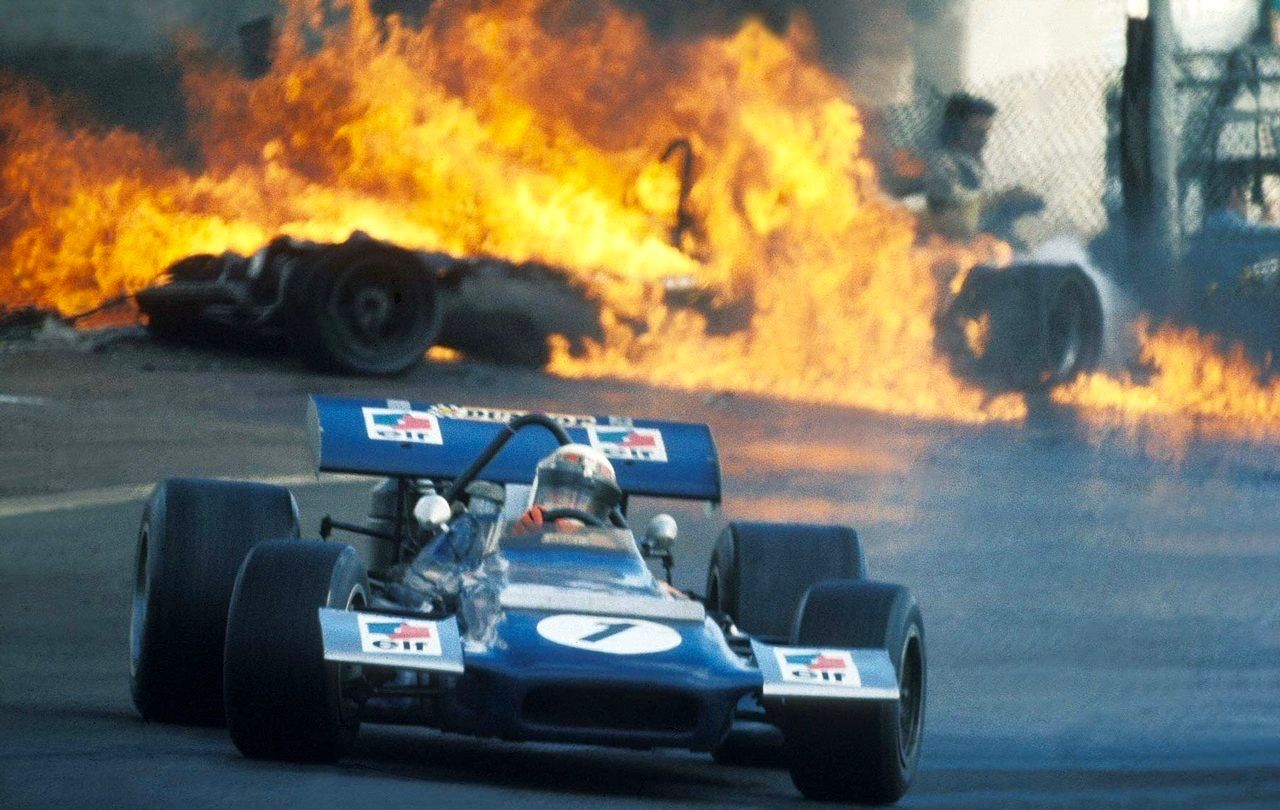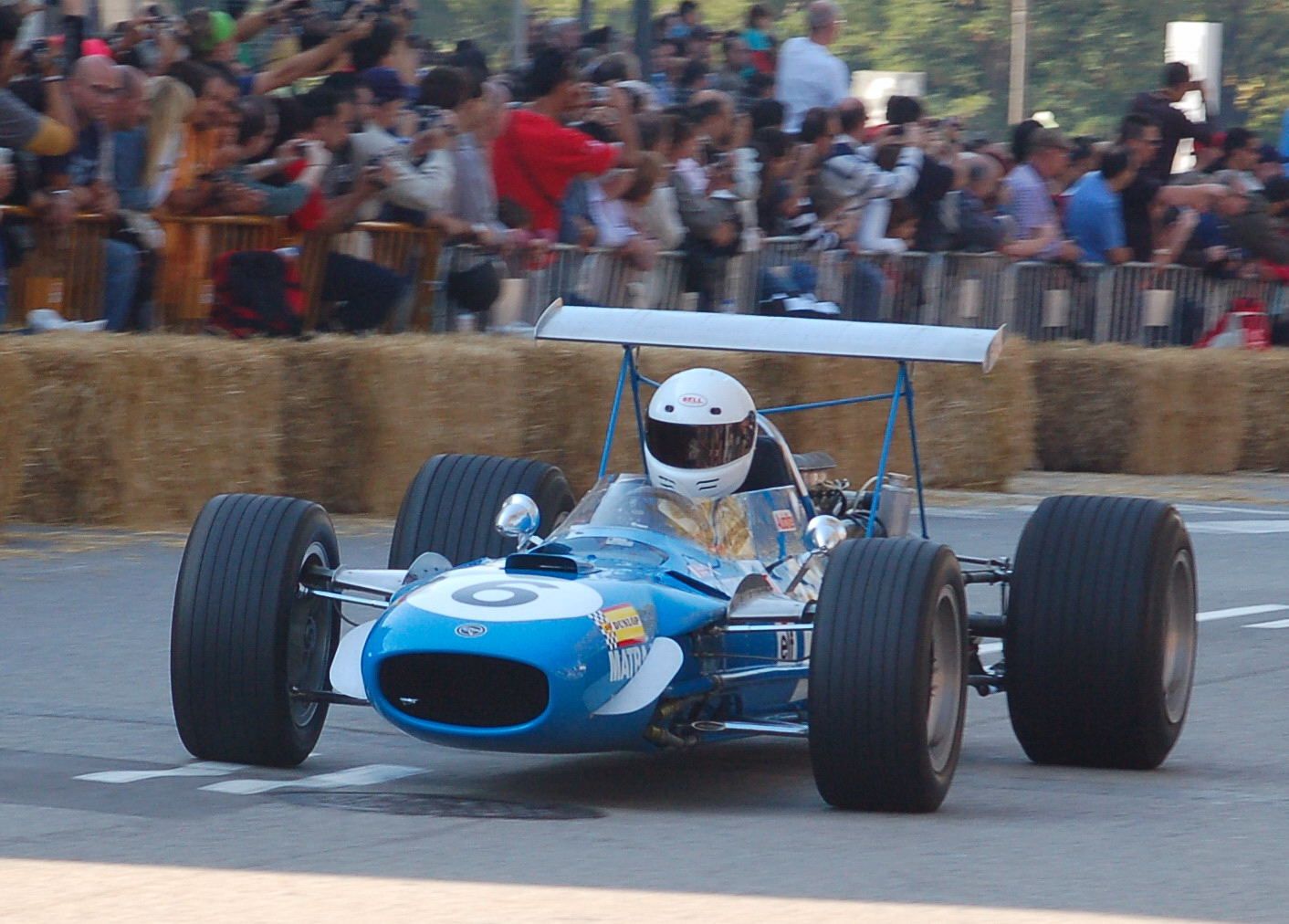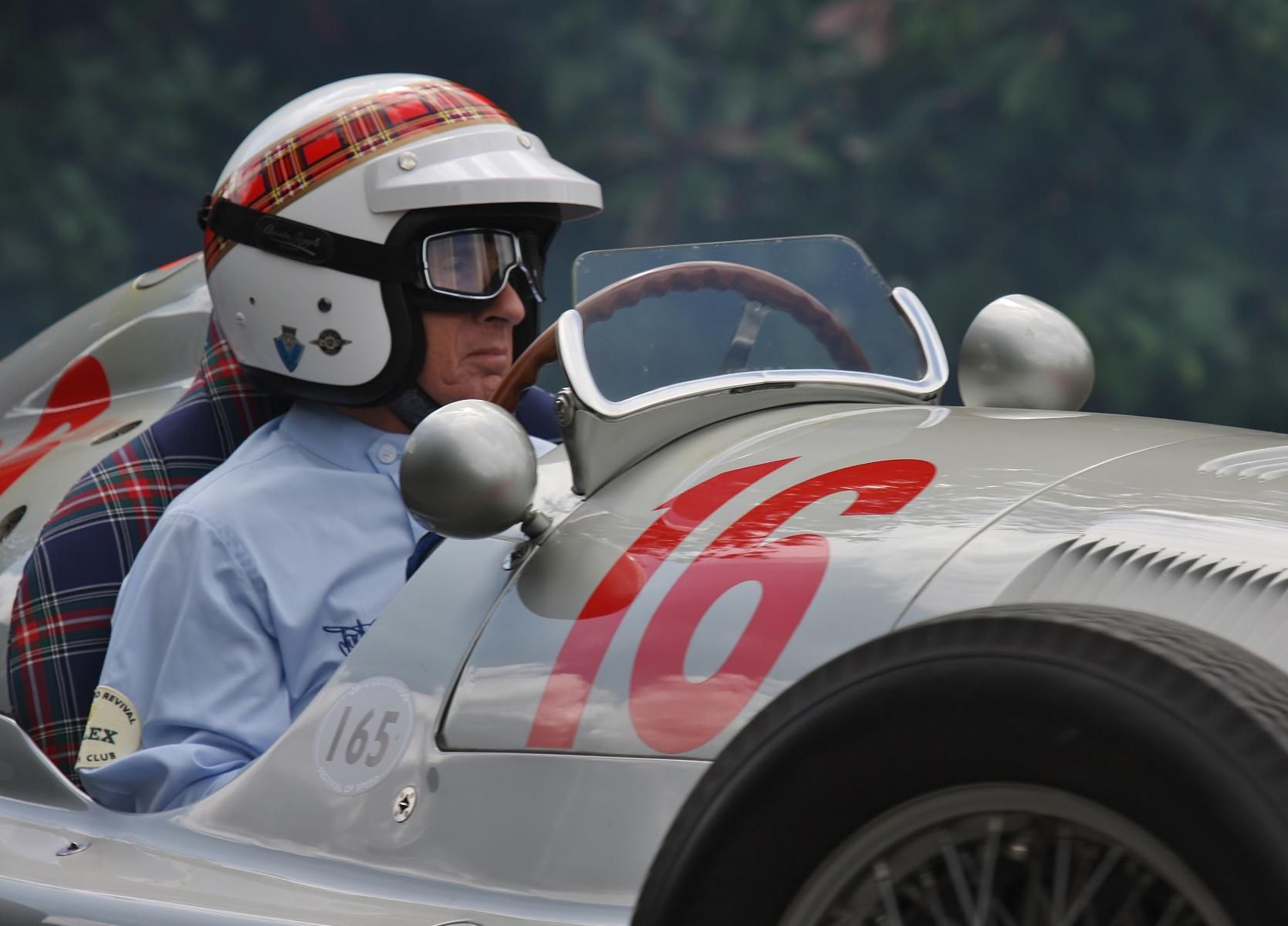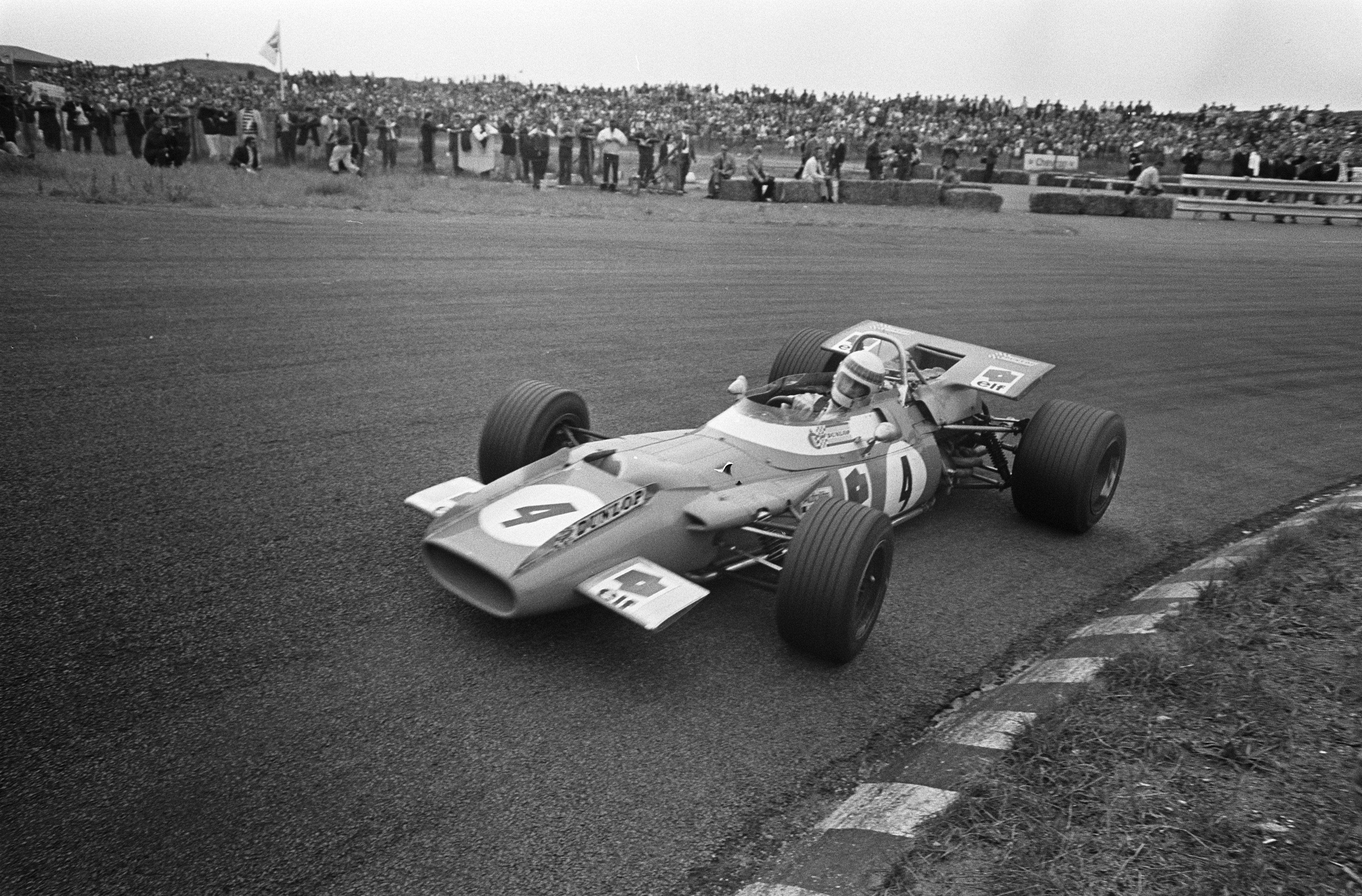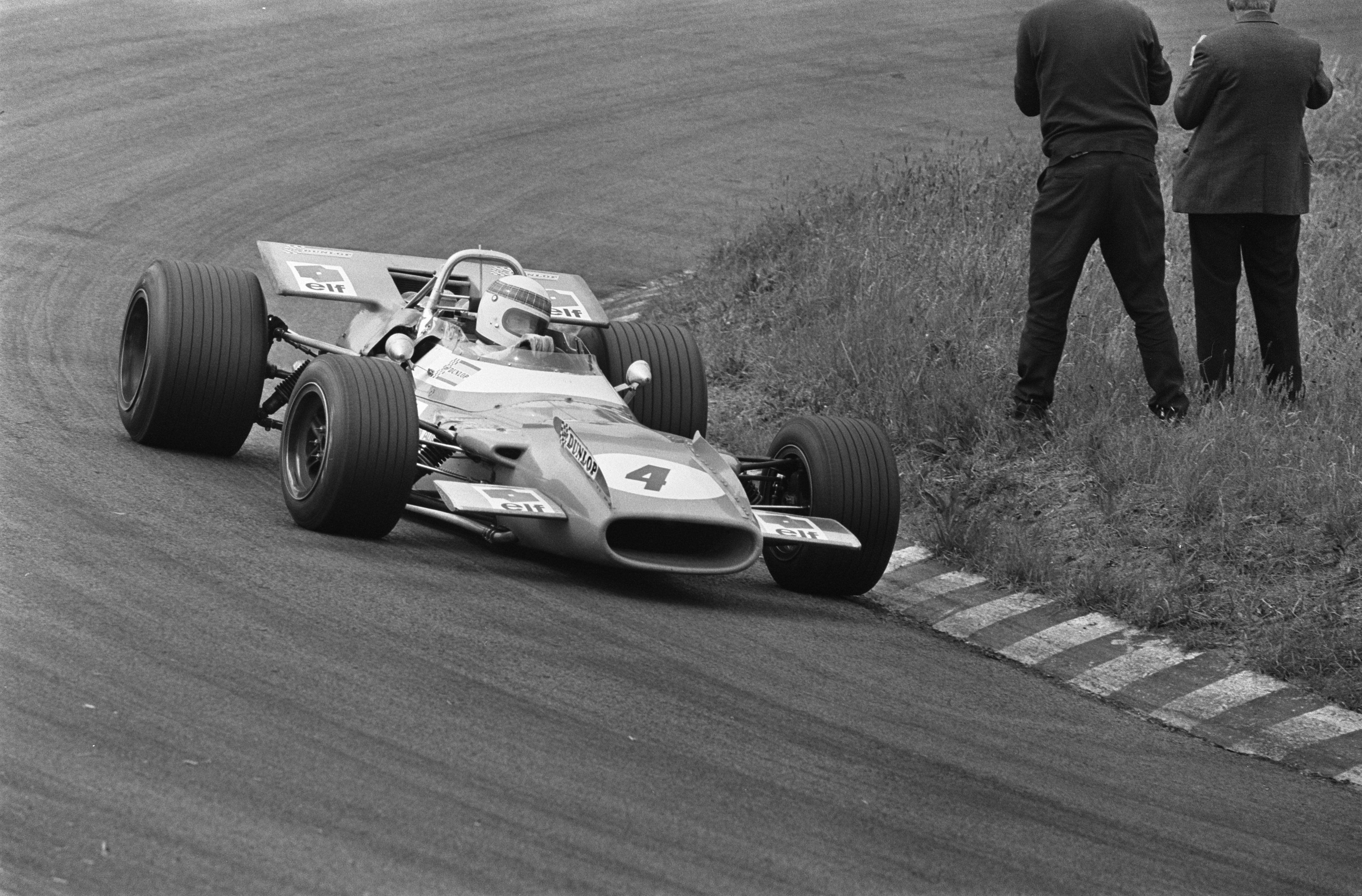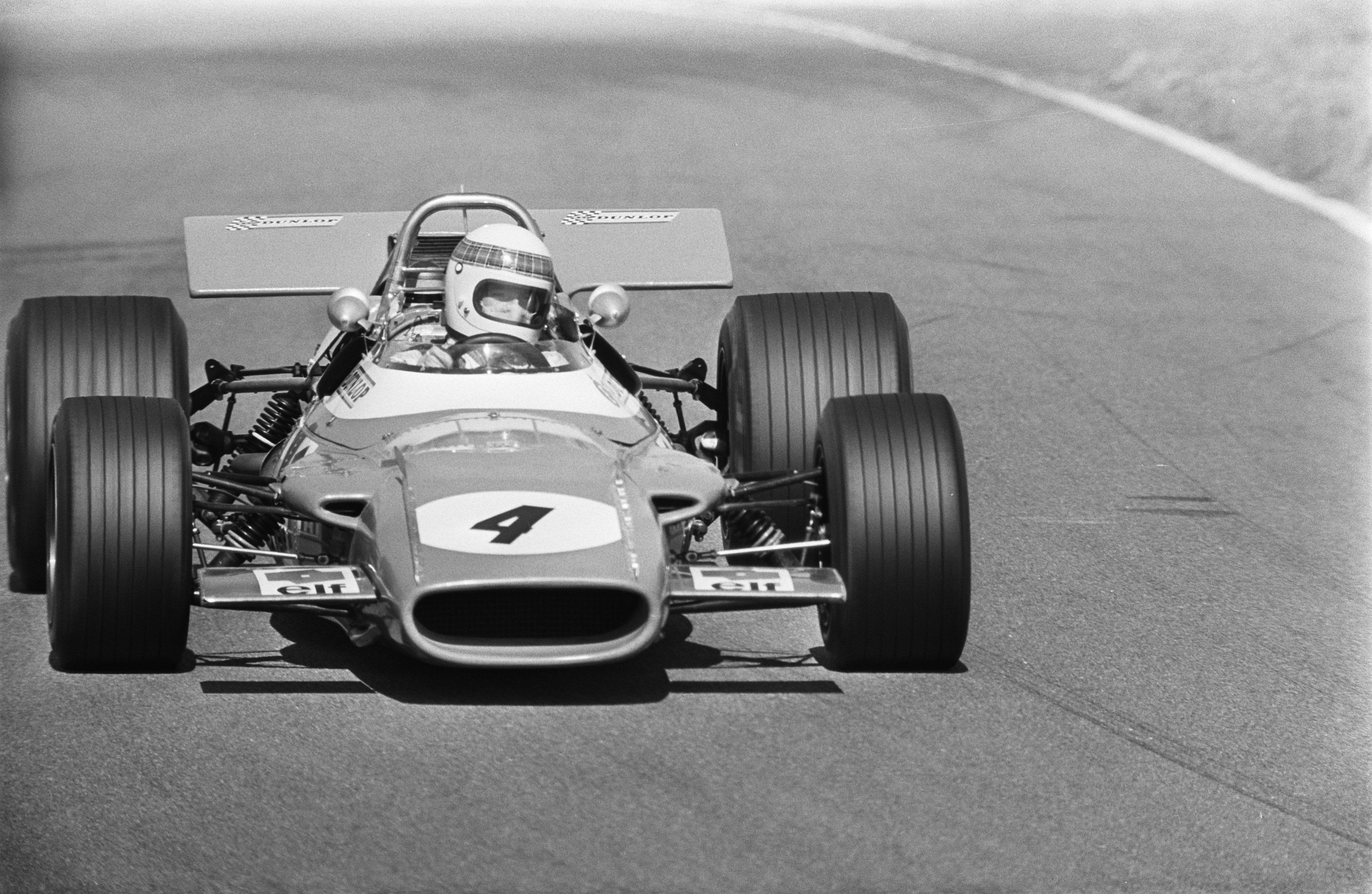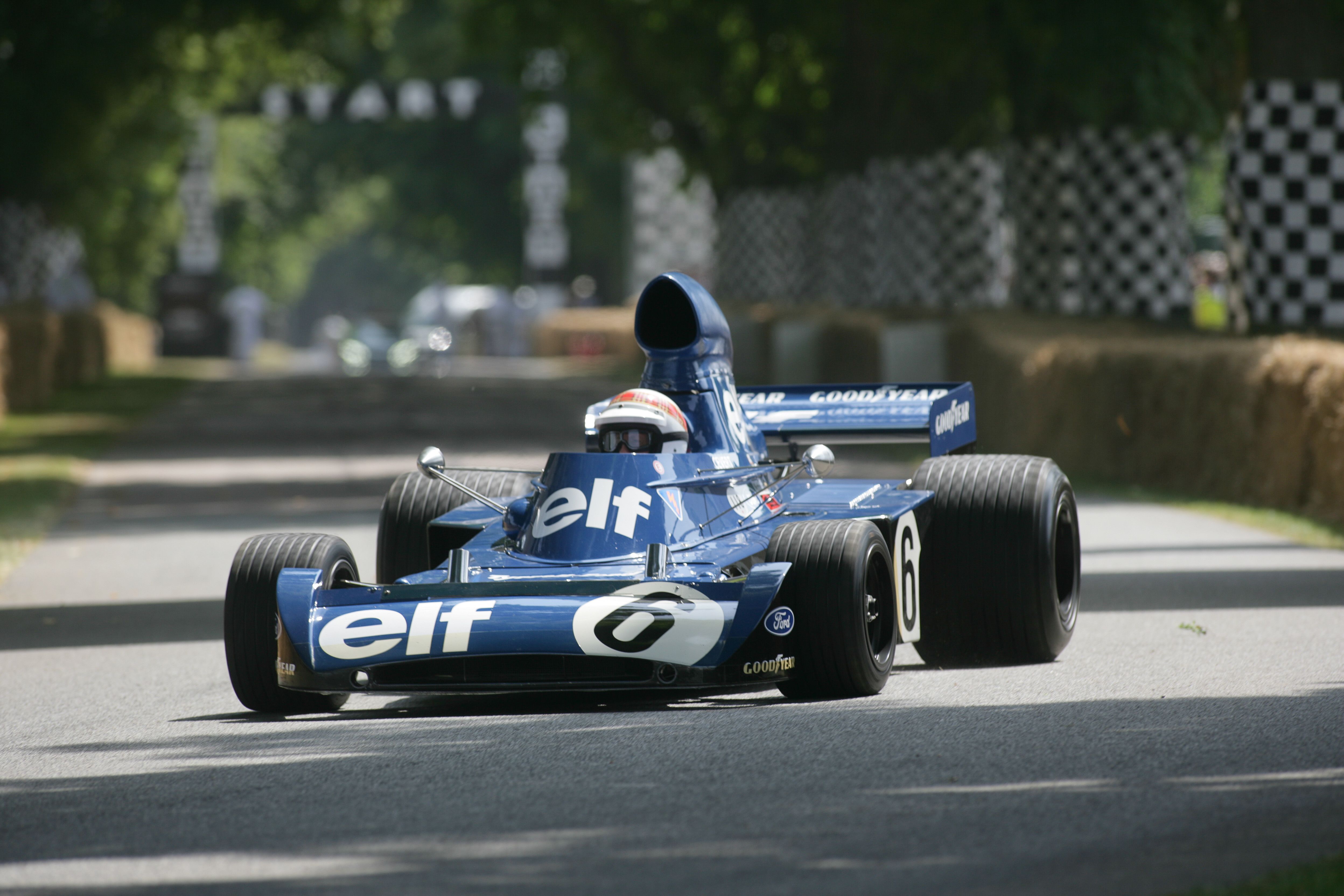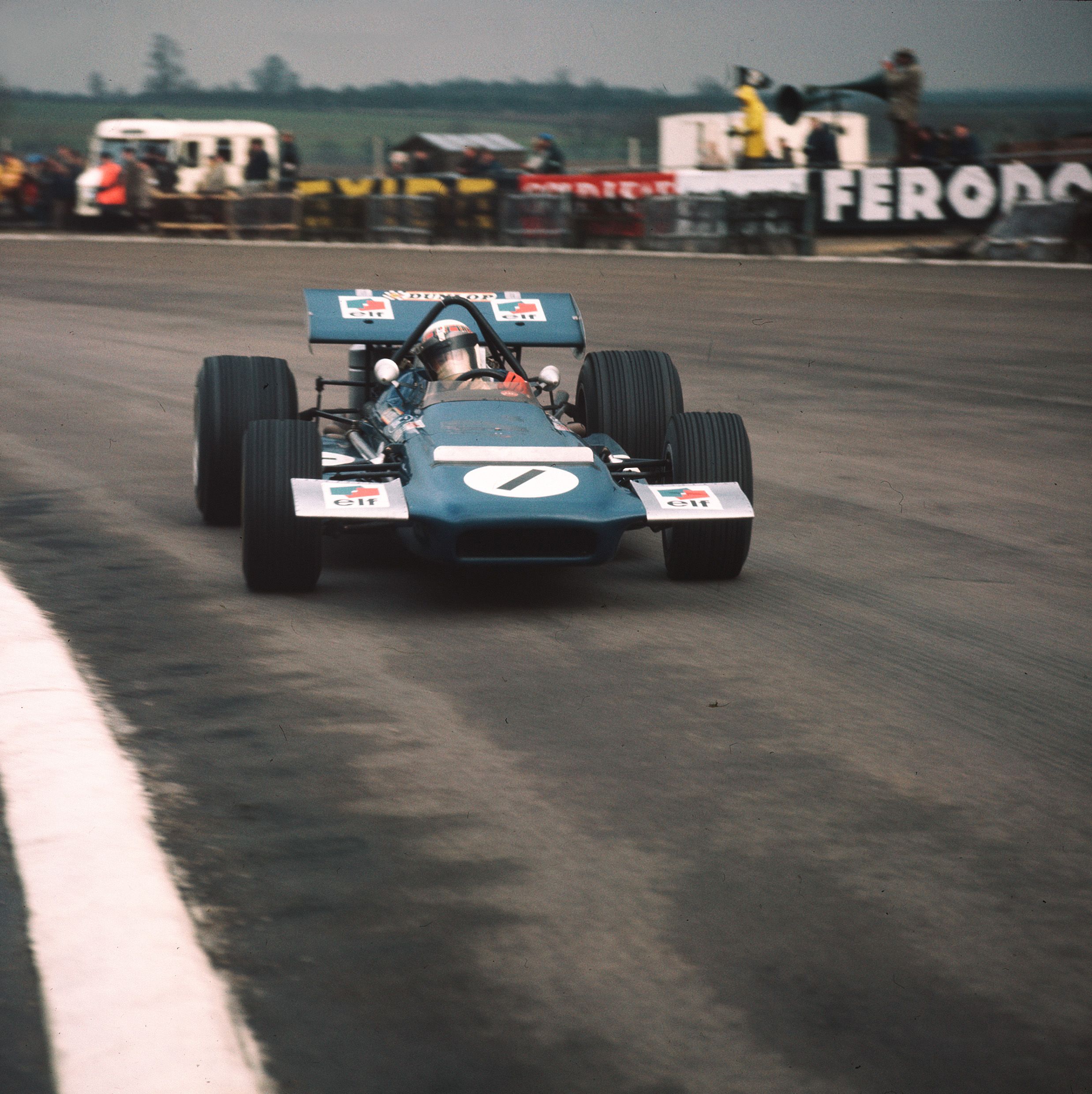It's been 50 years since legendary Scottish driver Jackie Stewart bagged his first World Driver's Title driving the Matra MS80 in his second season with the French government-backed outfit. This July, fans will be able to see the gorgeous blue silhouette of the MS80 running around the Silverstone Grand Prix Circuit in the hands of the inimitable JYS, the man who went on to win the World Driver's Championship two more times during his enduring partnership with Ken Tyrrell. Tyrell, however, eventually switched from being Matra's Team Manager to being the constructor of his own Tyrrell cars.
You have seen them in films (chiefly, John Frankenheimer's Grand Prix from 1966), period videotapes, and images and I'm sure you still ask yourself, How were they ever allowed to race those things? Motorsport wasn't always a safe place like it is today when, to be frank, only a freak accident can result in the death of a driver or a bystander, at least in automobile racing. Turn back the clock 50 years ago, and you'll realize that there were casualties every other weekend and that some of Formula 1's greatest talents from back in those days never got to grow grey hairs.
Out of the survivors, Jackie Stewart is one of the finest. Widely considered as Jim Clark's protegee, Stewart rose from the shadow of Clark's greatness after Jim tragically passed away in 1968 to win three F1 World Driver's Titles, one Tasman Series title, and almost won the Indy 500 on his first attempt in 1966, among many other accolades. Since his retirement from Formula 1 in 1973, after a grim weekend for Tyrrell's team, Stewart has remained very much active in motorsports acting as a pundit (if you're older you may remember him being part of the team on ABC's Wide World of Sports and NBC Sportsworld) on TV and, also, as a Team Boss in the '90s for Stewart-Ford. However, arguably, his greatest achievement has been to increase the people's awareness towards the importance of safety in motorsport during those deadly post-War decades. This stance made him an unpopular figure at the time despite his success as a driver but, nowadays, you can't help but admit that he's been instrumental in pushing motorsport, in general, to become safer and safer, a fight that's still going on today.
Stewart Won The 1969 British Grand Prix Held At Silverstone In the Matra MS80
This year, we're celebrating the 50th anniversary of the Woodstock music festival, Ford's last 24 Hours of Le Mans overall win and Jackie Stewart's run to his first World Driver's Championship in F1. As much as I love Santana, Creedence Clearwater Revival, The Grateful Dead, Jefferson Airplane, and the rest of the bands that played near White Lake in Bethel, New York, here on TopSpeed.com we talk cars and, this time around, it's JYS' first title that's the subject of the day. We've covered Ford's last win at Circuit de la Sarthe (and the second in the hands of John Wyer's team), briefly, in this piece about Ford's last Le Mans with its GTE-class Ford GT racer.
In the past decade or so, historic racing meetings have seen exponential growth in both popularity among fans and number of entries across the different classes allowed at such events. Nowadays, there are multiple championships for retired race cars, and some events have become staples among enthusiasts and racers alike. Such an event is the Silverstone Classic that takes place every July since 1990.
This year, the Silverstone Classic is celebrating Sir Jackie's first successful World Championship attack. Fans gathering trackside will be able to enjoy a number of high-speed demonstrations on the Saturday and Sunday of the event, "even if not at quite the same speeds as 50 years ago,” Jackie laughingly remarked, quoted by Motorsport Magazine. Another highlight of the weekend will be the newly renamed 'Sir Jackie Stewart Trophy' comprising of the two Masters Historic Racing-organized Formula 1 races for DFV-powered cars made between 1966 and 1985.
The multi-class FIA-approved Masters Historic Racing series will also organize a sports car racing on the Silverstone Classic weekend as well as two Aston Martin Masters Endurance Legends races, the 'International Trophy' 50-minute race for gentleman drivers only, the pre-1966 sedan race (known as the Transatlantic Trophy), and the pre-1966 Mini race.
The Aston Martin race is part of a true onslaught of Aston Martin machinery at Silverstone.
Other Historic Sports Car Championship (which are under the Masters Historic Racing umbrella) races crammed in the tight schedule of this year's three-day event are the Thundersports Series race (where you'll even be able to see a Can Am-spec McLaren M8F on duty), the Historic Formula 2 and the Classic Formula 3 races.
It's worth noting that the 2019 Silverstone Classic is supporting the Alzheimer's Research U.K. and the Race Against Dementia, a cause championed by Stewart himself as his wife, Helen, is one of the many sufferers of dementia. "It will be very special to see Sir Jackie back behind the wheel of the iconic light-blue Matra and together once again roaring around Silverstone. It’s going to be a fantastically evocative sight, and one which we hope will provide some impetus to further fuel awareness of, and fundraising for, the pioneering Race Against Dementia Fellowships," said the CEO of Silverstone Classic, Nick Wigley.
Stewart's '69 title, the fruit of a successful friendship
Matra, short for Mécanique Aviation et Traction, a French company founded by famous entrepreneur Jean-Luc Lagardère, wasn't involved in the car industry until the '60s when Matra bought Rene Bonnet. Matra was also active in media, weaponry, state of the art technology, and aeronautics and received some backing from the French government throughout its lifetime. Since 1994, Matra has been a part of the Lagardère Group.
"When first showed an interest in motor cars and motor racing, by forming a subsidiary company called Matra-Sports in October 1964, it created only mild interest in the International scene," lays written in a Motorsport Magazine article from February of 1968, when Stewart was just kicking-off his adventure with Matra after three years with Louis Stanley's B.R.M. team for which he made his F1 debut at the 1965 South African Grand Prix. Stewart became known that year as "Robin" while fellow Scotsman Jim Clark was referred to as "Batman." As you'd expect, "Robin" finished the '65 season behind "Batman" but only just, Stewart bagging a victory en route to third in the year-end standings - impressive for a rookie.
"With the engineering facilities of Matra, the racing and organizational knowledge of Tyrrell and the driving of Stewart, the team went from strength to strength and the Matra monocoque chassis, and handling earned healthy respect," is said in the same February 1968, article. In 1967, Matra proved almost unbeatable in Formula 3 with drivers Henri Pescarolo and Jean-Pierre Jaussaud while two teams battled for glory in Formula 2, the works-backed outfit with drivers Johnny Servoz-Gavin and Jean-Pierre Beltoise and Tyrrell's semi-works outfit with Jacky Ickx and Jackie Stewart in its driver roaster. Around this time, the French government stepped in to aid Matra for the first time. No less than $18.3 million (in today's money) were dispatched from Paris under the obligation that Matra would pay it all back if it became successful as a volume car manufacturer. If not, Matra didn't have to worry about paying any franc back.
The Matra project also received backing from the then-new Elf company (the name Elf was actually a set of three initials that stood for 'Essence Lubrifiant Francaise'), and the works cars began to be entered under the 'Matra-Elf' banner.
These Cosworth units that put out about 400 horsepower when in good shape were mated to a modified Matra F2 chassis that was set up to be driven by Ken Tyrrell's man, Jackie Stewart. Ken oversaw all the preparation while Matra people got a second F2 chassis ready with a 1.6-liter engine in the middle for the top French driver within the Matra team, Jean-Pierre Beltoise. He was going to be the first man to taste the Matra V-12 GP engine once it was ready for action but, until then, he had to make do with an F2 engine for the 1968 season opener at Kyalami, in South Africa. Jim Clark was on pole in the Lotus 49 that was seen for the very last time in its British Racing green attire before taking on the colors of its new main sponsor that was unveiled in Christchurch, New Zealand, soon after the South African Grand Prix: Gold Leaf.
Stewart was on the front row of the grid, qualifying third quickest, just 1.1 seconds slower than Clark and 0.1 seconds than Clark's team-mate Hill. Stewart got the better of Chapman's boys at the start and led the opening lap, enough to give Matra the much-needed publicity and to make the French bosses happy. Stewart later retired after the engine went kaput, but the Matra Grand Prix story was now afoot. Sadly, as we all know, Jim Clark perished before the second round of the 1968 F1 season, crashing in the rain during the Formula 2 race at Hockenheim, Germany, on April 7th. Stewart, too, had a tough time after the race in Kyalami. A crash during the Jarama F2 race (where Clark was put out by a shunt in the back that broke his suspension) rendered him unavailable for the Spanish and the Monegasque Grand Prix events. In Spain, Beltoise debuted the MS10, Matra's first proper F1 car that replaced the interim MS9.
The Frenchman qualified fifth, ran consistently with the leaders and finished fifth after setting the fastest race lap.
Jackie was back in action in time for the Belgian Grand Prix at the daunting Spa, the scene of his most horrific racing crash which had taken place there two years prior. The accident happened in dreadful conditions as Stewart tried to negotiate the Masta Kink (a quick left-right sequence in the middle of the Masta Straight) at about 170 mph. The BRM hit a puddle, spun, hit a telegraph pole, demolished a hut, and ended up hanging upside down in the wrecked car while fuel from the tank started to pour all over the place. Stewart was rescued by Graham Hill and American Bob Bondurant who'd also gone off the track at the kink, but it took about half an hour for an ambulance to show up while the race went on without a hitch. That incident made Stewart realize that racing was needlessly dangerous, and it started his tirade to change the status quo. But, in 1968, the old Spa was still on the calendar and Stewart finished fourth on the road while Briton Brian Redman crashed out in similar fashion after his suspension collapsed. He was very lucky not to get his arm snapped off as the Cooper he was piloting veered into the guardrails and landed on a car parked below.
For 1969, Matra presented to the world a brand-new car, the MS80. It was designed by Bernard Boyer with help from Gerard Ducarouge, the future Lotus Team Boss. Boyer set about fixing everything that was wrong about the MS10 (you see, after the kerfuffle with the MS11, Matra put its own engine program on hold and focused on developing a worthy Cosworth-powered GP car, although more reliable versions of the Matra V-12 were built for sports car racing purposes). "The main problem with the MS10 was with the spherical bearings in the suspension," Boyer said in a 2008 interview, pointing out that the bearings got lubricated unevenly during a race and, as such, the MS80 came with self-lubricating bearing. "Understeer was also a problem with the MS10. We corrected that by altering the weight distribution to make the front of the car lighter," Boyer added.
Matra International, the entrant that year, was essentially Tyrrell's team and, as such, you could call it a half-British affair, but the cars remain (to this day) the only French ones that have claimed the World Constructor's Title. Yes, Renault did win that title too but only with cars built in Britain. So, going back to '69, everything started, as per usual in those days, at Kyalami. Jackie Stewart won aboard the MS10 and led every lap in the process and followed it up with a victory in the Race of Champions, a non-championship event held at Brands Hatch.
The 'Flying Scotsman then aptly won five of the following six Grand Prix races, the fifth being the 1969 British Grand Prix at Silverstone. “The race was over 84 laps, but it could have been over 5 laps for all the difference it made to the way Rindt and Stewart leaped into battle,” wrote Motorsport Magazine in its post-race report.
Stewart vividly remembers that race and said, years later, that it was "was one of the most exciting and enjoyable F1 races that I ever had," before adding that "Jochen was one of my best friends. The cooperation we had in not trying to block each other allowed us to definitively run away from the rest of the field."
"We knew, because in those days there was no aerodynamic sophistication, that we could draft each other and pass if we were not blocked. Almost every lap, we exchanged the lead on the Hanger Straight and going into the 155 mph Woodcote corner, which in those days had no chicane," he remembered. “We pointed to each other which side to be passed on, to avoid reducing our lead from the rest of the pack. We exchanged the lead more than 30 times, and it was a fantastic race for both of us." Stewart was also the one to point out to Rindt that his rear wing was coming apart, thus avoiding what could've been a disastrous accident had his wing come loose at speed.
After the British GP, Stewart and the rest of the drivers gathered at the Nurburgring, the race Stewart would boycott as the head of the Grand Prix Driver's Association 12 months later, shortly after Piers Courage's death at Zandvoort in the De Tomaso run by Frank Williams' team. But, in 1969, there were no protests, and the race ran its course. Jacky Ickx had a poor getaway in his Brabham and dropped to ninth but, as a Ringmeister (who'd qualified on the front row in an F2 car in '67 among all the F1 beasts), he managed to gain all of the lost ground back and, eventually, challenged Stewart for the lead. Jackie conceded first place rapidly and was left in Ickx's dust as gearbox problems slowed the MS80 down.
How did Stewart manage to dominate with such ease in the first half of the '69 season? Well, as he explained, the MS80 stood out over time as the best car he's ever driven. "It had a very nice front-to-rear balance. Whether that was to do with its weight distribution or its wheelbase I'm not sure, but it certainly felt generally well tied together," Stewart said in 2006. He also made the point that the car that he carried to his last World Driver's Championship, the 1973 Tyrrell 006, was also a good car but one that "was a challenge to be quick in." Certainly, having confidence in your car and thus knowing you can drive within yourself and not overdrive to deliver the desired results is what helped Stewart. He'd realized ever since winning the '68 U.S. GP that, once in the lead, you can control the pace of the race if you're not genuinely challenged by another (faster) driver. "I suddenly discovered that if I went faster, the whole field went faster. If I went slower, they went slower."
If you don't want to miss seeing Stewart, who'll also turn 80 on June 11, and the MS80 reunited at Silverstone (and everything else that the Silverstone Classic has to offer) make your way to England this July and, if you can't, don't be disappointed! Stewart's '69 F1 title run will also be celebrated during this year's Goodwood Festival of Speed.
Further reading
Record Number of Porsches Gather For Porsche Parade during 2013 Silverstone Classic
Video: Porsche Parade during the Silverstone Classic in 2013

